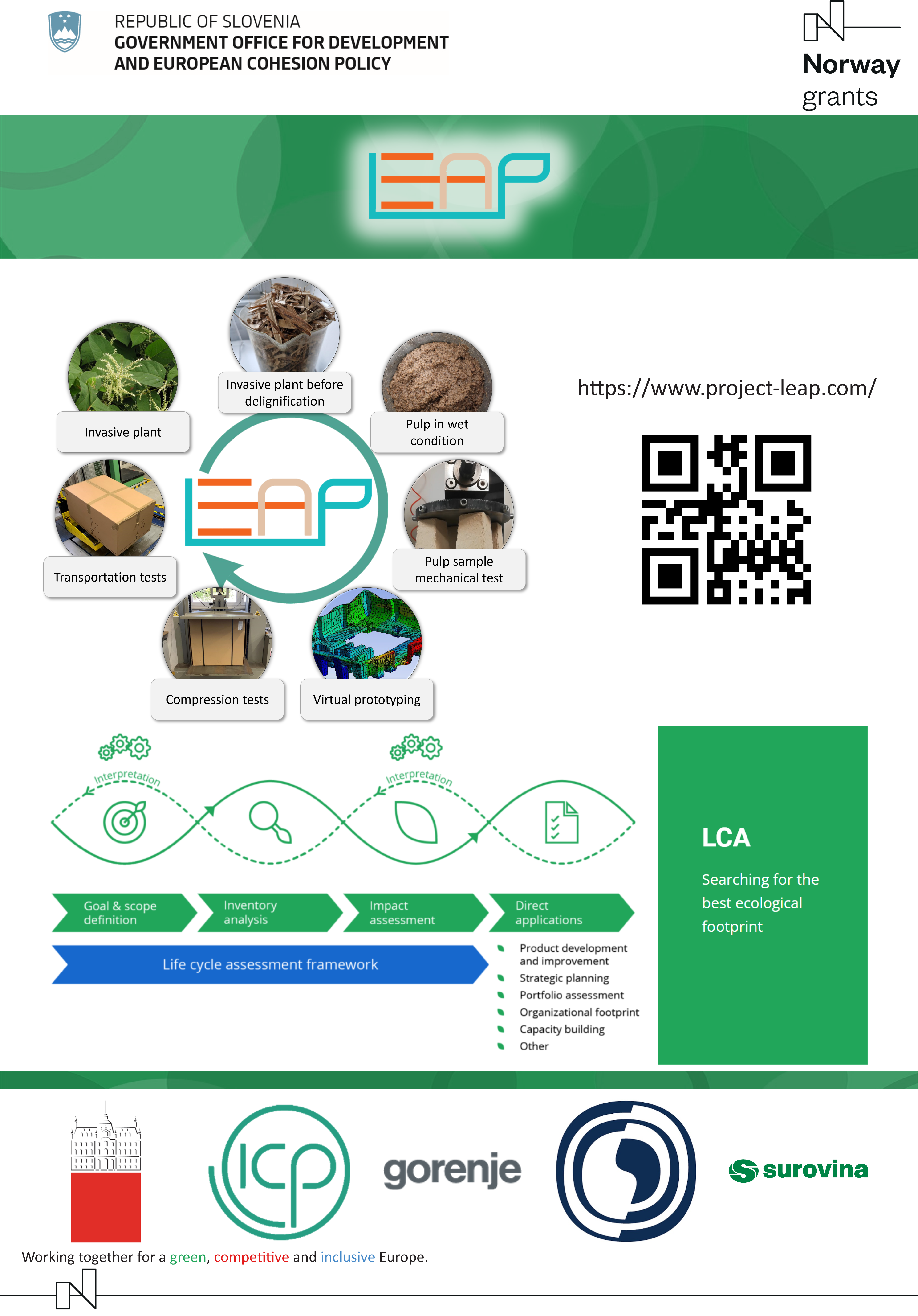Learning and demonstration alliance for designing and manufacturing sustainable industrial packaging from alternative lignocellulosic biomass – LEAP

Authors
Jawad Elomari, SINTEF, Norway, Gregor Čepon, University of Ljubljana, Faculty of Mechanical Engineering, Slovenia, David Ravnjak, Pulp and Paper Institute, Slovenia and Aleš Mihelič, Gorenje group, Slovenia
Abstract
Background:
The LEAP project addresses some of the challenges in the EU strategy for plastic packaging waste, in terms of replacing it with more recyclable materials; the problem being transitioning to more sustainable resource management with a low ecological footprint, and a comprehensive system for the collection and re-use of local renewable raw materials.
Heavy industrial products currently rely, almost solely, on Expanded Polystyrene (EPS) packaging due to its couching and protective characteristics, which are not found in cellulose-based packaging; hence, the LEAP project was initiated to develop the next generation of advanced functional packaging that incorporates the biomass of non-native invasive plants, and enables the production of high- performance packaging solutions.
Summary of the project:
Three main goals are set for LEAP: 1) establish a circular business model for the design and manufacture of industrial packaging from alternative cellulose fibers, 2) build a learning and demonstration alliance to disseminate knowledge for industrial packaging design based on alternative cellulose fibers, and 3) demonstrate the environmental and energy impacts of using more sustainable, low carbon, alternative materials. The partners include the University of Ljubljana, the Pulp and Paper Institute R&D in Slovenia, Gorenje (manufacturer of household appliances), Surovina (waste management services), and SINTEF (contract R&D).
Progress and outlook:
Currently, the focus is on non-native invasive plant species and analysing their potential for producing lignocellulosic fibers. We also established a centre for gathering and processing invasive plant waste to transform it into alternative lignocellulosic pulp. Several laboratory samples were assessed for their material properties and suitability for real-world transportation. Based on the identified material properties the initial concept of the industrial packaging was developed. The basis has also been laid
for an open-source expert system that can design protective packaging from alternative cellulose to achieve the best possible cushioning and protective performance.
